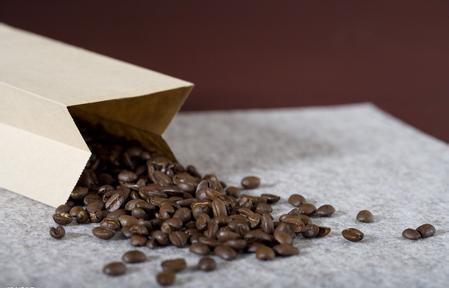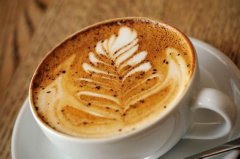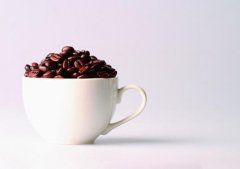Coffee culture basic knowledge enthusiasts love complicated utensils

Enthusiasts love complicated appliances.
A middle-aged man walked past a booth selling filtered coffee cups, and the woman at the booth just opened her mouth. The man smiled and replied, "this is too easy for me." My degree, at least, is the type of siphon. "
What the man calls "siphon" is a complicated coffee pot. It usually has two layers. Add hot water to the pot and coffee powder to the pot. Under the heating of the alcohol lamp and induction cooker, the water in the next pot will slowly boil and climb up bit by bit until it rises into the upper pot. After the coffee powder in the upper pot is fully extracted by boiling water, turn off the heat source, and the coffee will flow into the lower pot, accompanied by a lot of light brown foam, which is coffee oil and the essence of a cup of coffee.
In the eyes of "ashes" coffee experts, the "siphon pot" is their ultimate tool. The improved siphon pot also allows the extracted coffee to flow into the cup and coffee pot through small tubes.
The most critical 45 seconds of coffee life
At the intersection of Lize Road and South Square Road of the West Railway Station in Beijing, there is an inconspicuous workshop. The owner is called "Uncle Dou" and is a member of the European Fine Coffee Association. When he saw Uncle Dou, he was in front of a big "stove", telling the story of coffee to 20 admiring enthusiasts. This big "stove" is a high-end baking equipment highly respected by professionals, and many bakers even dream of one day operating it to express their coffee ideals. Holding a big picture taken from a Kenyan plantation, Uncle Dou shows how the locals pick and screen coffee cherries, how to dry or wash to remove the flesh of the "cherry", remove the parchment-like shell of the "cherry core", and the pectin glued to the shell; until the gray-green nut is removed from the core, it is coffee raw bean.
A bucket of raw coffee beans was poured into a large preheated "stove" and then turned on the switch. About ten minutes later, the sound of "bang-bang" came from the stove, which was the first time that the coffee beans had burst. Previously, they have been undergoing physical changes of "dehydration" in the furnace.
The 45 seconds after the explosion is the most critical moment in the life of coffee beans. During this period, a series of physical and chemical changes will occur in these beans. They continue to dehydrate and swell, and their sugars turn into caramel and carbon dioxide at high temperatures, and their grayish-green bodies turn yellowish brown, full and shiny; and their substances eventually turn into caramel, flavor oils, quinic acid and caffeine. The flavor oil is a "fragrant family" with more than 800 members.
The composition and content of these aromatics vary greatly according to different producing areas, picking methods, peeling and peeling methods, baking temperature and baking time of raw beans. So far, no one knows exactly what happened to these beans in such a short period of 45 seconds.
"Uncle Dou" opened the floodgates before the beans burst for the second time and went into deep baking. A burning smell sprang up instantly, and the coffee beans, like a flood discharge, poured into the large plate at the front of the stove and cooled quickly, driven by the spiral arm.
Making good coffee is only one step more than "instant"
In China, people's understanding of coffee either stays at the "instant" level, or knows the local coffee culture like the back of their hand, looking for expensive coffee beans, fancy and expensive utensils.
Blue Mountains in Jamaica, Kona in Hawaii, Harald in Ethiopia, Super Colombia, Golden Manning in Sumatra. It is one of the top coffee beans in the world. Wei Lingpeng, head of the Coffee Salon, said that good beans are the basis for making a good cup of coffee. However, to make a cup of coffee that suits you and find the beans you like is the beginning of "exploring the road".
However, the coffee-making utensils used by "Uncle beans" are just a 49-yuan French filter pot. He makes a cup of coffee, which is only one more step than "instant".
He poured a portion of coffee powder into the pot and added 92 ℃ of water. If you cut off the heat source, open the lid and cool for 1 minute, the temperature of the boiling water will be about 92 ℃. This is the temperature at which coffee tastes best. Uncle Dou flushed the water into the pot, placed it for 1 minute, and then gently pressed the final shaft of the pot between the golden grease and the water. After 1 minute, press the finale slowly to the bottom. The coffee was poured into the cup and a strong nutty aroma overflowed.
The charm of coffee lies in its ever-changing nature. There are the most expensive coffee beans in the world, but not the best coffee. More than 800 kinds of aromatics will be different because of people's preferences. When attention is focused on the nose and mouth, the taste buds of the tongue tell us that every sip of coffee contains aroma, flavor, mellowness, acidity, sweetness and aftertaste. Different kinds of coffee have many flavors such as fruit, nut, caramel and so on. Everyone can always find a coffee that suits them. Therefore, Europeans do not like "instant solution". But they are also not fond of tedious, willing to give the baking and grinding to the merchants, simplify the processing process as far as possible, and leave the time for taste to themselves.
When the complexity becomes simple, the Chinese will really fall in love with coffee and enjoy it.
Important Notice :
前街咖啡 FrontStreet Coffee has moved to new addredd:
FrontStreet Coffee Address: 315,Donghua East Road,GuangZhou
Tel:020 38364473
- Prev

The History of "substitute Coffee" in Germany
Today, Germany is one of the countries that import the most coffee in the world. More than 1/4 of Vietnam's annual coffee exports are sent to Germany. But when it comes to Germany, we only think of sausages and beer, not coffee. This is because, in the 17th century, when coffee spread across Europe, Germany had few overseas colonies, unlike Britain and France.
- Next

A must for tourists to visit the Rainbow House Cafe in Rambo
The French symbolist poet Altier Rambo is undoubtedly a talented poet. by the time he was less than 20 years old, he had already written the vowels, the drunken Boat and the season of Hell. He has also had a sensational same-sex relationship with Verlaine, another symbolist poet ten years older than him. At the age of 20, Lambo officially closed his pen and began to self-exile for the rest of his life. Let me
Related
- Beginners will see the "Coffee pull flower" guide!
- What is the difference between ice blog purified milk and ordinary milk coffee?
- Why is the Philippines the largest producer of crops in Liberia?
- For coffee extraction, should the fine powder be retained?
- How does extracted espresso fill pressed powder? How much strength does it take to press the powder?
- How to make jasmine cold extract coffee? Is the jasmine + latte good?
- Will this little toy really make the coffee taste better? How does Lily Drip affect coffee extraction?
- Will the action of slapping the filter cup also affect coffee extraction?
- What's the difference between powder-to-water ratio and powder-to-liquid ratio?
- What is the Ethiopian local species? What does it have to do with Heirloom native species?

